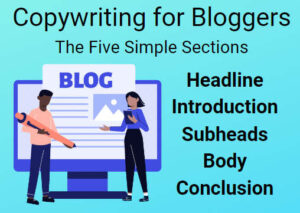I’ve got a blogging buddy who is hurting big time. He works his butt off on his posts but has a low readership.
He called me and asked if I could read his posts and give him some advice.
Lord, give me strength.
His headlines are blander than a baloney sandwich without mayonnaise, the subheads are substandard, and his body copy needs to go to the gym.
As politely as I could, I let him down softly.
“YOUR BLOGGING SUCKS!”
(There – I said it.)
If you’re having the same problem, this post will help you become a better blogger. By the time you’re finished reading this post, you will have a simple and easy way to write blog posts that grab your reader’s attention and keep your bounce rates down.
Let’s get ready to rumble!
Blogging Demands that You Learn Copywriting
Any solid blogger who tells you they didn’t study copywriting is lying or on drugs. That is because blogging and copywriting are from the same family.
If you were to dig up old long-form magazine ads from the pre-Internet days, you would see a startling similarity between blog posts and advertisements.
Take a look at this Eugene Schwartz ad from the 1970s:
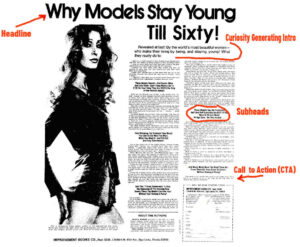
As you can see, the elements of copywriting are very similar to a blog post. Like copy in advertisements, blog posts have headlines (titles), captivating introductions, subheadings, body copy, and calls to action (CTAs).
The real value you’ll receive from learning copywriting isn’t the formatting; it is learning how to write compelling words that will help you sell your products, services, or ideas.
If you are new to blogging, I would advise you to learn copywriting first.
Fortunately, I started writing sales letters before I learned how to blog. My wife and I created products for the U.S. Army and sold them through the mail using Dan Kennedy’s Magnetic Marketing kit.
This kit was a series of sales letters Dan wrote, and you could change them to sell whatever you needed. At the time, I didn’t know anything about writing a direct mail piece, but once I used the kit, I understood the value of copywriting.
Simply put: copywriting will sell your products and services.
It doesn’t matter if you’re writing a sales letter, email campaign, or a blog post, copywriting will get the job done.
Why Reader Engagement is Vitally Important
If you’re going to make money blogging, you need to learn how to do one thing: engage your readers.
Keeping your readers engaged in your post is vital for several reasons.
As you already know, the Internet playground is highly competitive and has millions of distractions that can draw your audience away. If your post doesn’t catch your reader’s eye and keep them reading – they will leave.
Chances are that they will never return once they start watching funny cat videos.
Another reason why you need to keep your readers on your blog is it will help your rankings in the search engine result pages (SERPS).
If people bounce in and out of your site, search engines like Google will not rank your posts or website very high. This is called a high bounce rate; you will need to do everything you can to keep that rate from climbing.
Copywriting Made Extremely Simple for Bloggers
Since you’re a blogger, I will teach you the basics of copywriting so you can start using them immediately in your blog posts.
Learning to write copy is like learning anything else; it takes time and some practice. However, it only takes a reasonable amount of time for you to learn and implement.
But here’s the kicker – you don’t have to become an A-list copywriter to get the job done.
After a few weeks, you will become proficient enough to write engaging, converting blog posts.
You only need to learn these copywriting sections to get started:
- The Headline
- Introduction
- Subheads
- Body Copy
- Conclusion with Call to Action
I will also show you a few extra things you can do to make your blogging fun and interesting for your readers.
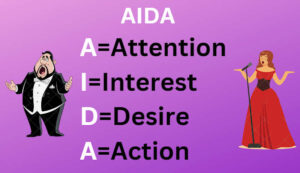
The World’s Simplest Copywriting Template for Blogging
Here is an acronym you can use while writing blog posts: AIDA.
No, it is not the opera by the famous composer Verdi, but if that helps you remember it, so much the better.
A = Attention
I = Interest
D = Desire
A = Action
Let me expand a bit on each point.
As I mentioned earlier, you need to grab your reader’s attention – and that is why headlines are so important. Captivating headlines make your readers want to look at your post because it offers them something they need or desire.
Here is the Schwartz advertisement title from above: Why Models Stay Young Till Sixty!
That advertisement ran in prominent women’s magazines, and do you think women would be interested in reading that information?
Of course, they would!
You’ve Got to Keep Them Interested!
Interest is another crucial part of keeping readers on your page. After you have gained your reader’s attention, you must keep them on your page.
There are easy tricks for doing this – a good way is to tease your reader with a story. People love stories, especially if they can relate to them.
After you have captivated your reader with a story, you can ramp up their interest by telling them what they need.
You can create desire by telling your audience what they need to solve a problem they are having in life.
An example of this is the post you are reading right now. You are reading it because you want to know how to write popular posts that people will want to read, right?
The body of most posts is like that. Once you hook an audience into reading your material, you should deliver something valuable to them.
If you aren’t delivering some information of value, you will lose your readers, and chances are, they will never return.
Action is the last aspect of writing a post.
Tell your readers what they should do next, like leaving comments about your post or giving you their email address so you can send them a newsletter.
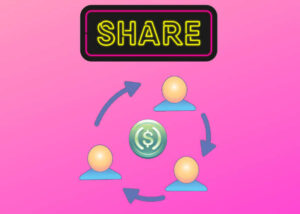
The More You Share, The Richer You Will Become
I know what you are thinking. You’re thinking, if I give away all of my trade secrets, my readers won’t need me anymore.
Let me tell you a story. I once wrote a detailed blog post that told my readers exactly how to write a sales letter, and I went through every aspect of writing it from top to bottom.
This guy emails me asking me to write him a sales letter for his car storage business. After talking to him about what he needed me to write about, I asked him how he found out about my copywriting services.
“Oh, I read your post on how to write a sales letter,” he told me.
So I asked him the obvious question as to why he didn’t try writing the sales letter himself, thus saving himself some money.
(Yep, that was a stupid question to ask him, but I couldn’t resist.)
His answer was revealing.
“I was going to write it myself, but once I read your post on how much work I would have to do, I decided to hire you to write it for me.”
As you can see, there is a lot of influence and money to be made in sharing what you know about a subject.
Now That We Have All the Copywriting Pieces – Let’s Put a Post Together
So far, you’ve learned about the AIDA template and what those letters mean. Also, you learned about the principal parts of a copywriting sales piece (headline, subheads, body, and call to action).
Now we are going to use this information to create our blog post.
Let’s get this show on the road.
How to Write a Headline
I love writing headlines because you can let your imagination run wild with ideas. Over time, you will develop your formula for writing them.
I use a basic formula for writing mine, and here it is:
B+C = I
To be more specific:
Benefit(s) plus Curiosity equals Interest.
That’s it – the whole enchilada.
Here is one of the most famous headlines ever written by the king of copywriting, Gary Halbert.
At Last! Scientists Discover a New Way To Look Younger In Just 17-Days!
Let’s analyze this to see how it relates to our B+C=I formula.
The words, At Last, are an eye-catcher that announces something important is about to be unveiled.
Note: This is probably something you won’t use in a blog headline, but there are no hard and fast rules about how to write a title, so if it works for you, go ahead and use it.
Now for the B or benefit section of our headline:
Scientists Discover a New Way to Look Younger
This headline probably was used in an advertisement or sales letter focused on women, but the question is, do these words relate to a benefit?
Of course!
What woman doesn’t want to look younger?
But here’s the kicker:
Scientists have discovered this new way to look younger.
Holy cellulite, Batman!
If authority figures are saying this, then it’s got to be good, right?
Now, let’s see if this headline uses the element of Curiosity.
Look Younger In Just 17 Days!
If this headline only said that you can look younger, most readers would blow it off, but 17 days is specific and a realistic amount of time.
So, of course, this headline makes the ladies want to know how this is possible, and they are interested in reading the body copy of the advertisement to learn more.
Blogging Headlines are Different – So Watch Out!
Blogging headlines (aka title tags) are supposed to be about 50 to 70 characters long for SEO purposes.
Why?
It is because of how titles appear in the SERPs on desktop or mobile devices.
So, that makes your headline writing a little more challenging.
Here are a few tips on how to make your headlines more interesting for SEO purposes:
- Keep your blog post headlines around 60 to 70 characters in length. Doing so will help you keep your title on the SERPs displayed properly on different devices like cell phones, tablets, and desktop devices.
- Use numbers, if you can, in your posts, like this: The Top 5 Tips for Successful Bodybuilding or 5 Tips to Compare Car Insurance Quotes
- Try to Keep your blog title tags short, around 6 to 8 words. SEO professionals say this is the sweet spot for blog post headlines.
- Use strong action verbs such as “discover,” “learn,” or “transform” can make your headline more compelling and encourage readers to click or buy what you’re putting out.
- Also, use you top keywords if you can. Most copywriters use the post’s main one in their headline and the first line of text in a post.
Use Subheadings to Break Things Up
Once you get people to start reading your post, your copy must keep their eyes on the page. One way to do that is by using subheadings (sometimes called subheads).
Subheads are short phrases that break up the content on the page.
When a person lands on your blog post, the last thing they want to see is large blocks of text like this:

As people start reading your posts, they will freak out if they see this mess. It’s bad enough when you see blocks of text like this in a book, but when viewed on a cellphone or computer screen, it’s murder.
Subheads are like mini headlines and should be used with the same mindset when creating them. When you add a different section to your blog post, use subheadings to separate it from the rest of your post. Doing this will give your readers a clear picture of the main idea in that section.
When you write your subheadings, you will want to keep them as short as possible and place them in bolder print.
I like to use H2 HTML tags for the main points and then smaller tags like H3 and H4 for points under the main points like this:

Note: If you go back and look at the Schwartz advertisement, you’ll see subheads sprinkled through his copy.
Try to make your subheadings as dynamic and eye-catching as possible. It isn’t easy writing them, and it takes practice, but you must keep in mind that your goal is to keep people reading your post.
Whatever you do, don’t ignore the importance of subheadings because they are almost as important as your headlines.
Let’s Get to the Meat – Writing the Body of Your Post
Your body copy needs to be organized and focused on your topic like a laser. Don’t start veering in a new direction – stay on the main subject.
The main thing you must remember is the copywriting rule of being beneficial to your reader at all times.
Keeping your reader engaged and on the page is paramount, so here are a few simple tricks you can use to keep their attention. As I mentioned above, you should use subheadings to break up your sections and keep your readers interested.
You will also need to format your body text properly as well.
One thing you should not do is write big paragraphs. Remember the big block of text above? You don’t want your body copy to reflect that.
You need to have clear and concise sentences grouped no more than three at a time.
Also, you can write sentences all by themselves, like this one.
Your English teacher from high school will probably freak out at this, but on the Internet and a cellphone screen, it is a whole different world, so break up your sentences.
An easy way to do this is to separate different points. If I am writing about oiling the wheels on a skateboard, I’ll use a separate sentence or a group of them to talk about starting to ride the board.
If I want to make a good point, I’ll write a short sentence by itself.
Cool Tricks to Keep Readers Reading
Here are a few other tricks to writing engaging body copy:
• Use bullet points (Like these ones)
• Insert relevant graphics (You can create these using Canva)
• Sparingly use italicized, underlined, or bold text
• Blockquotes for emphasizing quotes or specific passages
• Use WordPress plugins for sharing different quotes in your post
Some people like to use different fonts, sizes, and colors in their text, but I don’t format mine like that too often. It usually depends on what kind of point I want to make.
But hey, you should do whatever it takes to get the job done.
CTAs – Tell Them to Do Something
The final copywriting element you need to use in your blog posts is a call to action (CTA) statement.
If you don’t know what a CTA is, it’s a brief statement or device (like a button or opt-in box) that persuades a reader to take action.
Before the Internet became a prominent force in our lives, CTAs used to look like this:
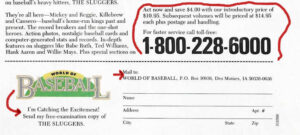
Now, CTAs look like this:
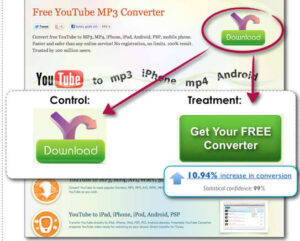
As you can see above, things have changed.
The main thing you need to know about CTAs is that they should be short and sweet. If your persuasive writing in the post has done its work, then your readers should be happy to do what you ask or tell them to do.
Tell them what you want them to do, and if you have to, tell them again.
Is there a button you want them to click on?
Then tell them to click on the button.
Do you want them to fill out a field and give you their email address?
Tell them to fill it out.
Have a problem with nobody leaving comments in the comment section of your post?
Ask them to leave a comment.
Whatever action you need them to take, tell them exactly what to do.
Great CTA Tricks That Work
The main thing to remember about writing a call to action is to keep it brief and to the point. Just like a headline, offer your readers something in return for their attention.
A response to a CTA is a vote of confidence, so make sure your offer is a good one.
If you want to use a button or link, try to use colors that stand out. I got this idea from Neil Patel, who researched color attraction and found out that people like the color orange and that it sticks out more.
If you think about it, that makes sense because people who do construction or road work wear bright orange because it catches the eye more.
So, Neil Patel likes to use orange to catch your eye on his website or call to action.
Here is a picture of his Ubbersuggest site:
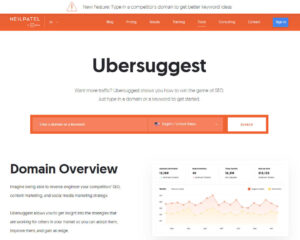
Another good thing to do is add an element of urgency to your call to action. You can use phrases like “act now” or “call today”.
Also, you can add scarcity or urgency with “this offer will end soon, so act today” or “limited supply, so acts today”.

One last thing, try to put your CTA in the top half of your post and use enticing graphics to entice your prospects to take action.
Conclusion
There are many more aspects of applying copywriting tactics to your blogging efforts, but that would entail a much longer post. I’m assuming you’ve read enough at this point.
You need to take action and start writing your posts using the outline this post has given you. You will not be able to write a great blog post immediately, but with plenty of practice, you’ll get better.
One other thing.
Read a lot of books about the psychology of selling because there are quite a few mind tricks you can use to keep people reading your posts. And if you can get people to continue reading, you will have a better opportunity to sell your products and services to them.
Please, leave comments in the comment section below. It will really make my day.


